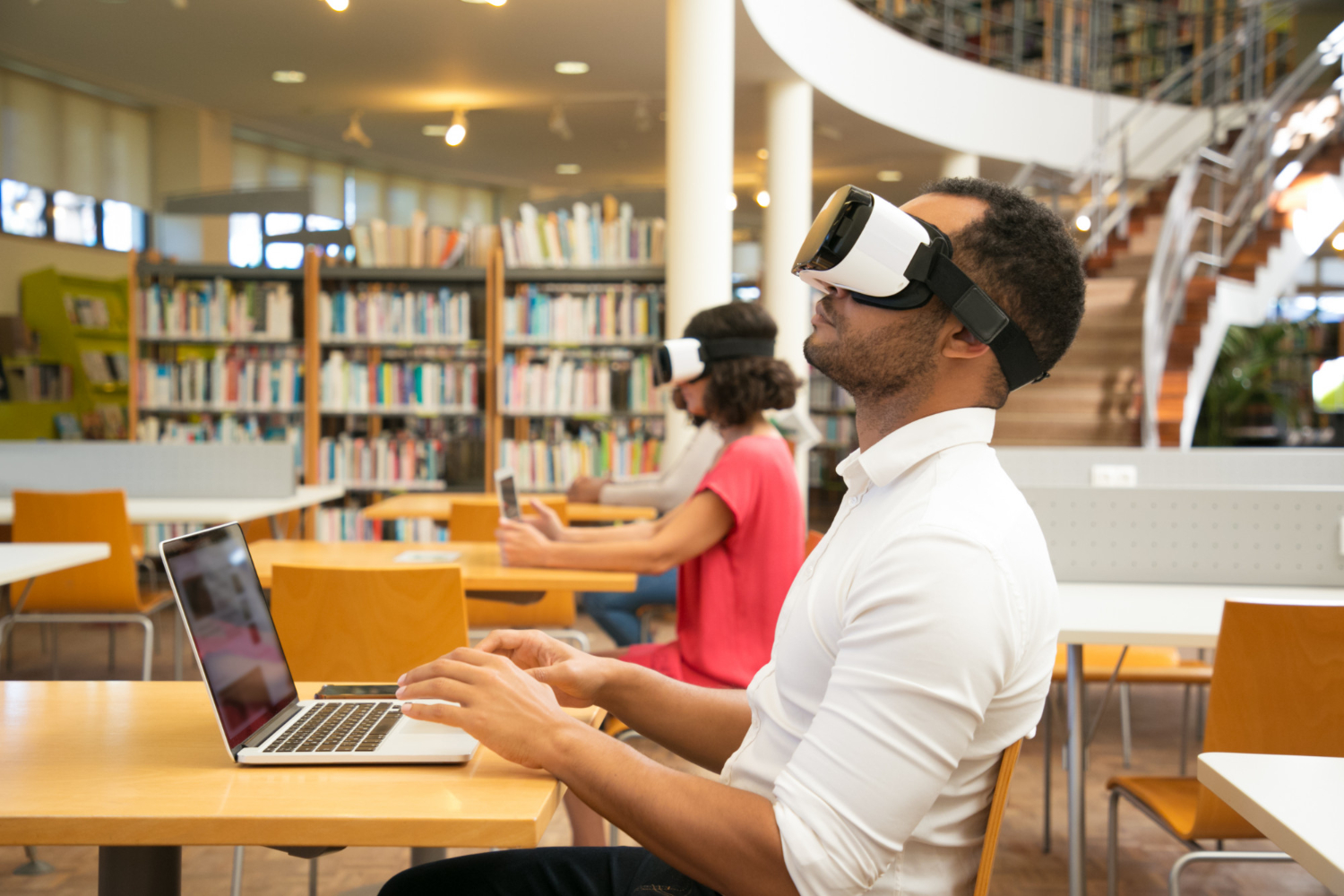12 Ways Technology Negatively Impacts Education and Student Well-Being
Technology is an integral part of education today and influences the way students learn, how teachers work, and how schools are operated. Education has never been so interactive and available as it is now, when we have different digital tools, online platforms for learning education and smartphones.
But as tech innovation has upended education and opened up new possibilities, it has also faced fresh challenges that have hindered learning, mental health and even human connections. Whether tech is good or bad for learning remains open to debate. It has been pressed into service to support instant information, adaptive learning systems and global networking.
Excessive reliance on technology has had a negative impact in decreasing attention spans, undermining critical thought, and creating mental health issues. This paper will explore both sides of the debate, beginning with the 12 of the most major negative effects of technology on education and one’s individual life, and a strong case for why technology should not be eliminated altogether.
Is Technology Good or Bad for Learning?
Technology is an important influencer of education today as it provides opportunities and challenges. It makes learning more effective with instant feedback and information, interactive lessons, and world wide collaboration. But an overreliance on digital tools can diminish focus, critical thinking and creativity. Whether tech is bad or good for learning is only as effective as the way we use it – marry the two together in a manageable form and you have better education, less troubled minds.
Good for Learning
The education procedure can be improved through knowledge when applied professionally. Learning technologies such as Learning Management Systems (LMS), digital whiteboards, replication software, and artificial intelligence-based platforms have paved the way for personalized and well-organized learning.
Many nursing students who search for expert academic support, such as those who wonder if someone can
take my HESI exam for me, also benefit from these advanced digital learning tools that enhance preparation and understanding.
- Improved Accessibility: Technology closes the distance between students and resources, making it possible for students in remote provinces to have access to high quality education materials and even lectures by tutors in another state via the internet.
- Collaborative Learning Atmospheres: Multimedia-rich presentations, integrated along with gamified assessments and simulated research laboratories make difficult content understandable.
- Self-Paced Learning: E-learning platforms such as Coursera, Khan Academy and Udemy, there are no immovable learning agendas.
- Better Collaboration: Now, all students and tutors have access to platforms such Google Classroom, Zoom and Microsoft Teams so that they can continue to work together off-site.
- Instant Feedback and Grading: Through online quizzes and AI-assisted scoring mechanisms, students can get immediate feedback on what went wrong or right, thereby improving with each sequence.
Contempt these undisputable paybacks, the overdoing and mismanagement of technology have exposed numerous drawbacks that cannot be unnoticed.
Bad for Learning
Technology has provided an added boost to learning, but it can also be a disadvantage to education if unrestrained or not properly regulated. They will struggle with problems including an absence of attention, helplessness to procedure information well and lower originality. Add to that, a state of social remoteness, appliance dependency and information overload has set in.
Many teachers complain that overreliance on technology has eroded traditional learning skills, such as penmanship, critical reading and an understanding of in-depth research. Add to that, the eternal connectedness influencing study vs. free time has elevated stress and burnout among learners.
12 Negative Effects of Technology in Education – Conclusion Overuse or misuse of technology has negative effects on individuals and the education sector as a whole.
What is the Negative Impact of ICT on Education?
With the advent of Information and Communication Technology (ICT), learning materials are now available at users’ fingertips. However, this convenience also has its drawbacks. Students often show less involvement in peer discussions and rely too heavily on digital resources.
Many have developed a dependency on search engines rather than using analytical or problem-solving approaches—similar to how some professionals prefer to pay someone to take PMP exam instead of mastering the concepts themselves. Moreover, maintaining classroom discipline has become challenging as students face constant digital distractions. Uneven ICT access has also widened the gap between advantaged and disadvantaged learners, creating a significant digital-education disparity.
How Mobile Phone Usage Affects Student Learning?
Phones have become the new menace in schools. Investigates have shown that students who pamper in their headsets during study time suffer from poor academic presentation. The never-ending alerts, social media updates and entertaining apps confuse students from their studies.
Mobile addiction also causes sleep deprivation and improper time management, both of which, in turn, influence cognitive performance. Smartphones, instead of being used as a source of learning inspiration, turn into devices to procrastinate and distract.
The Negative Effects of Technology in the Classroom
Unchecked classroom technology may cause more chaos than learning. It can be hard to keep munchkins on point when they are surfing for other sites or chatting during class.
Digital tools can occasionally substitute for intrinsic human engagement that is critical to education. Lack of individual communication with teachers that deter mentorship and moral counselling. Further, dependence on digital slides may inhibit creative and critical involvement in class discourse.
How Does Internet Connection Affect Student’s Academic Performance?
With the advent of Information and Communication Technology (ICT), learning materials are now available at users’ fingertips. However, this convenience also has its drawbacks. Students often show less involvement in peer discussions and rely too heavily on digital resources. Many have developed a dependency on search engines rather than using analytical or problem-solving approaches—much like how some learners choose to
hire someone to take my online exam instead of fully understanding the subject matter.
Moreover, maintaining classroom discipline has become challenging as students face constant digital distractions. Uneven ICT access has also widened the gap between advantaged and disadvantaged learners, creating a significant digital-education disparity.
Negative Impact of Technology on Mental Health
One of the most worrying trends related to recent technology usage is the impact on students’ mental wellness. Extended screen exposure, competitive spirit of online comparison and academic burden over digital learning cause anxiety in addition to stress and depression.
Social media causes unrealistic success and beauty but more self-doubt for students. The Mental Fatigue of being constantly notified and over-informed takes its toll on our minds, making it harder to stay focused, thus less productive.
Negative Impact of Artificial Intelligence on the Environment
Though artificial intelligence (AI) has affected education through the automation of grading and personalized learning experiences, it also brings unhealthy effects indirectly. The cost of maintaining large AI models — the energy consumption that powers them and data center emissions — degrades the environment.
And in education, AI can also dehumanize learning. When machines take over the work of tutoring or assessing, that human relationship weakens and with it, motivation and even empathy in learning.
10 Negative Effects of the Internet
The internet, while being a salvation of knowledge about anything and everything, also brings with it many negative influences to education and life. These include:
- Information overload leading to confusion.
- Decreased attention span.
- Exposure to misinformation.
- Cyberbullying and online harassment.
- Plagiarism and academic dishonesty.
- Reduced social interaction.
- Internet addiction.
- Health issues due to sedentary lifestyles.
- Privacy and security concerns.
- Decline in deep reading and comprehension skills.
And if students lean too much on the internet, they could be substituting real understanding with rapid but shallow responses.
Negative Effect of Digital Technology on Students
Digital technology has fundamentally altered how students think, communicate, and solve problems — but not always for the better. Technology’s “immediate gratification” decreases patience and perseverance, both essential for effective learning.
Many students now prefer quick solutions instead of developing analytical skills, leading some to even seek shortcuts like trying to pay someone to take my proctored exam rather than mastering the material themselves. Dependence on calculators, spell checkers, and translators reduces memorization and language proficiency. Moreover, constant screen exposure causes eye discomfort and body aches, lowering overall study efficiency.
Negative Effects of Gadgets on Students’ Academic Performance
Devices like tablets, laptops and gaming consoles can help with e-learning but also hinder academic success when abused. Students whose entertainment app use is too high score lower in evaluations.
The blue light from gizmos has a trick of disturbing the sleep-wake cycle causing fatigue and lack of concentration. Chronic gadget usage will also lead to postural issues that may eventually lead to poor health and learning stamina.
Decreased Attention Processes
The human brain is not good at multitasking. Students lack the discipline of concentrating on a single activity and are not able to focus on one task for periods longer than 10 minutes.
Between short attention spans and the resulting inability to grasp anything fully or for long, these two problems can conspire toward a circuitous road to comprehension. Cognitively, fragmented knowledge, not deep learning, is the product of continuous partial attention. The practice of browsing, as opposed to reading deeply, has really marked today’s digital age learners.
Increased Stress and Anxiety
Pressure to stay tethered, complete work online and remain digitally active can all play a role in mental fatigue. Students are drowning in the ceaseless deluge of information and notices.
When the line between work and play is a little fuzzy, it can lead to stress at the cost of relaxation. Too much screen time changes dopamine levels leading to stress and an inability to be satisfied with your own academic performance.
Deterioration of Interpersonal Competence
Technology can come between us. The higher the grade, I’ve observed, and the more comfortable students are communicating in front of a screen rather than face to face, the shakier become these human skills: speaking respectfully and astutely with an eye to problem solving; working together for a common goal; resolving conflicts with civility and empathy.
Humans need emotional interactions as temperature checkers. As learning writes itself into the digital, helping students to express themselves with confidence or work together effectively in analog may become trickier.
Bad Effects of Technology in Education
In a nutshell, the disadvantages of technology in education are varied. Apart from distraction and addition, technology may encourage cheating (academic dishonesty), cause digital divides and stifle creativity.
Many students are too lazy to think and prefer shortcuts like copy pasting the information when they look for answers on the internet. There is also the chance that teachers become dependent on technology and are less flexible in a traditional learning environment. The digital transformation of education, if not fully weighted, may undermine elemental values of learning.
Also Read This Blog: Academic Fields That Minimize Math Requirements
Drawing Positive and Negative Effects of Technology Poster
A balanced view of technology in education can be visually represented through an educational poster illustrating both benefits and drawbacks.
Positive Effects:
- Easy access to knowledge
- Interactive learning
- Personalized education
- Global collaboration
Negative Effects:
- Distraction and addiction
- Reduced attention span
- Academic dishonesty
- Mental health concerns
Such visual tools help students and educators reflect on their digital habits and adopt responsible technology use.
Reasons Why Technology Should Not Be Taken Away
Technology should not be eliminated entirely from education, however (its) disadvantages. The secret, they believe, is balanced and well-guided assimilation. Teachers and parents should encourage digital literacy — guiding students not only in how to use technology but how to use it responsibly.
Technology promotes inclusivity with its affordable adaptive aids for handicapped students. It bridges the learning experience between cultures, opens up academic opportunities and equips students for future workspaces that require digital literacy. To ban technology outright would ostracize education from a present-day context.
Positive and Negative Effects of Technology on Education
The impact of technology in education is complicated — it can produce great results when used correctly, but can also be a distraction. The positive impact is in accessibility, transparency and engagement. Its negative side is all about distraction, addiction and deteriorating mental health.”
Its fate rests on what educators, policymakers and students do with it. It’s not about banning the tech, but teaching how to engage mindfully—managing screen time, maintaining academic integrity, addressing social and emotional well-being.
Conclusion
Technology isn’t inherently good or bad, it’s just how we use it. When applied judiciously and intentionally, technology has the potential to make learning more active and accessible. But if left unrestrained, it can peck at the very things that make human intellectual life so rewarding — curiosity, attentiveness, the exchange of ideas.
The future of learning is oriented toward a hybrid solution: combining technology for efficiency and human interaction for yielded depth. By promoting responsible use, nurturing digital literacy and prioritizing mental health, teachers and students can harness the power of technology for true educational and personal growth.
(FAQs)
- What are the main negative effects of technology on education?
Technology can lead to distractions, reduced attention span, and overreliance on digital tools. It may also encourage academic dishonesty, affect interpersonal skills, and widen the digital divide between students with and without access to advanced devices.
- How does excessive screen time affect student learning?
Prolonged screen exposure can cause eye strain, fatigue, and sleep disturbances. It also reduces students’ ability to focus for extended periods, negatively impacting comprehension, memory retention, and academic performance.
- Can technology affect students’ mental health?
Yes. Overuse of social media and online platforms can cause anxiety, stress, and feelings of isolation. Constant comparison, cyberbullying, and academic pressure from online learning environments contribute to poor mental well-being.
- What impact do mobile phones have on classroom performance?
Mobile phones often distract students with notifications, games, and social media. This divided attention reduces engagement, comprehension, and participation in classroom activities, lowering overall academic outcomes.
- How does technology reduce interpersonal communication skills?
When students rely heavily on digital communication, face-to-face interactions decline. This limits the development of empathy, teamwork, and social confidence—skills essential for both academic and personal success.
- Why is internet dependency harmful for students?
Constant internet access encourages multitasking and information overload. Students may prioritize quick answers over deep understanding, which weakens problem-solving and critical thinking abilities.
- Does technology affect creativity in education?
Yes. While digital tools can inspire creativity, excessive dependence on pre-made solutions or templates can restrict original thinking and innovation among students.










